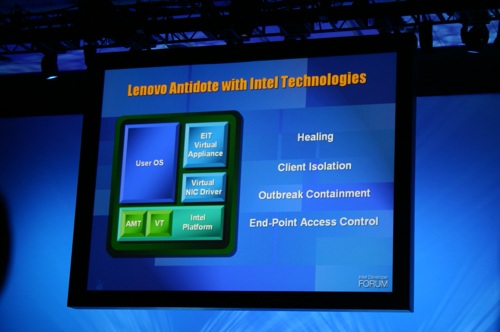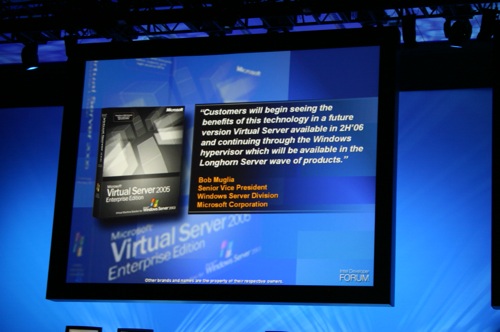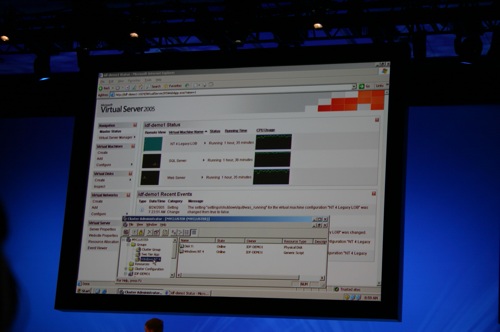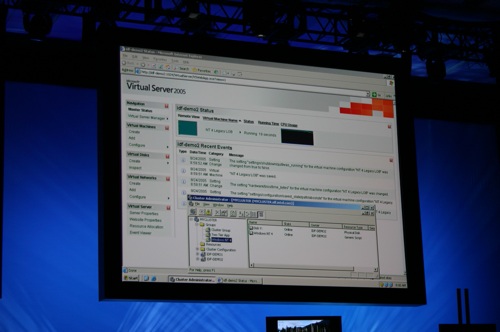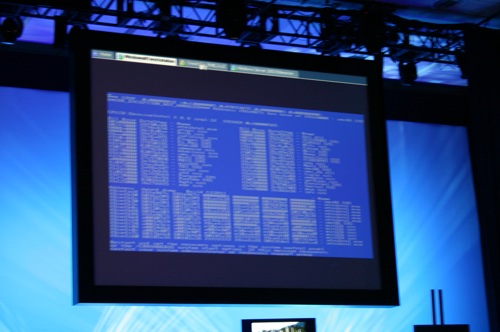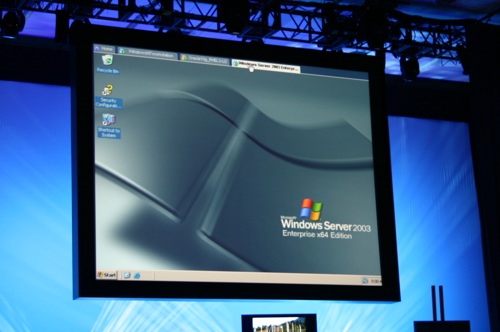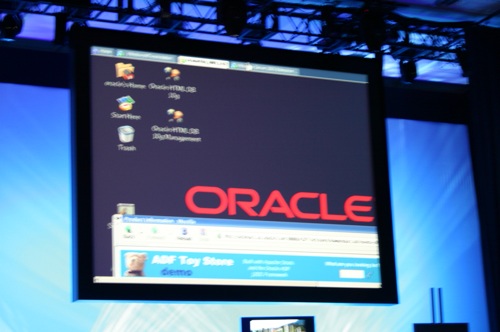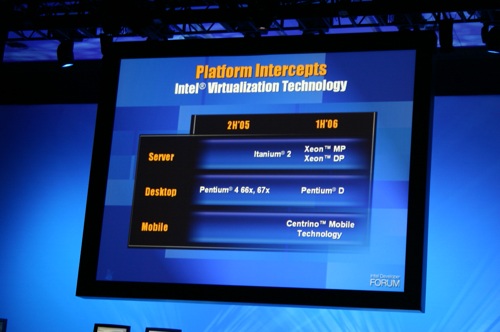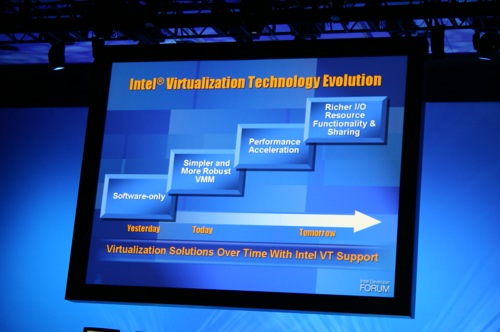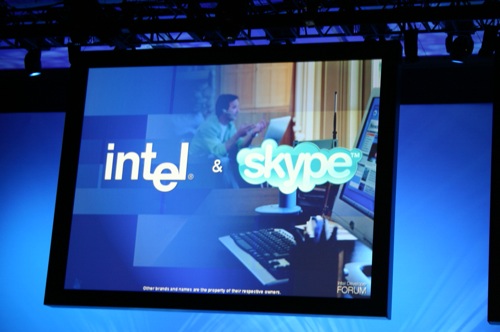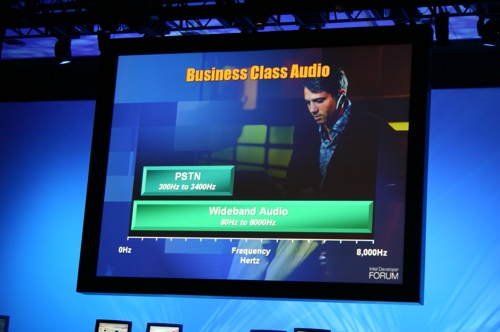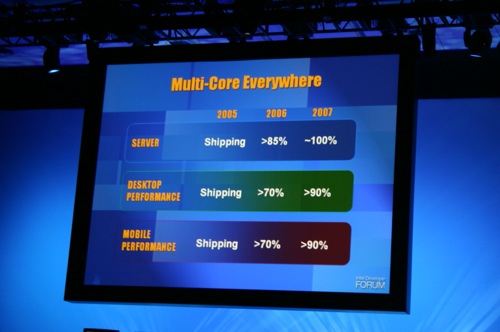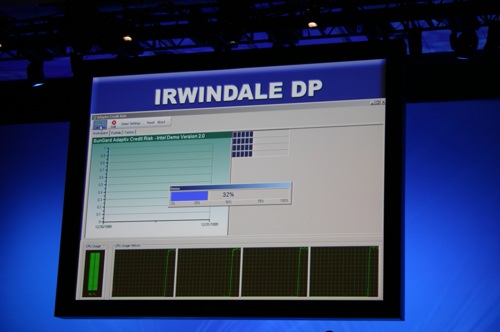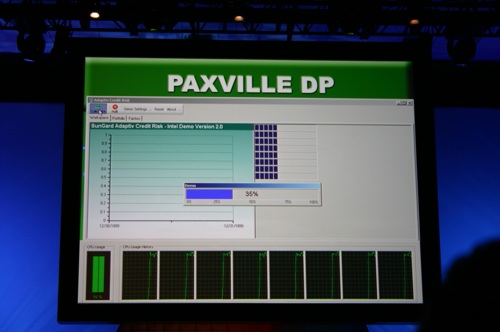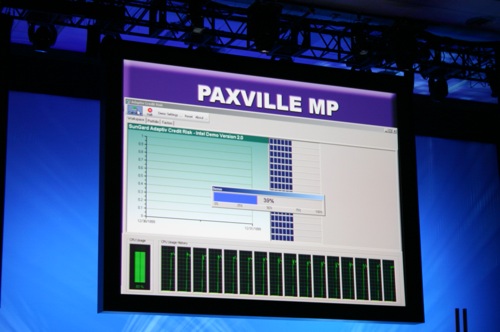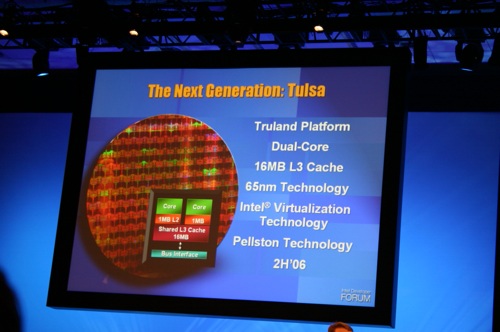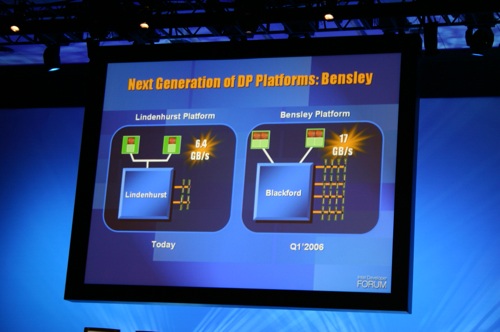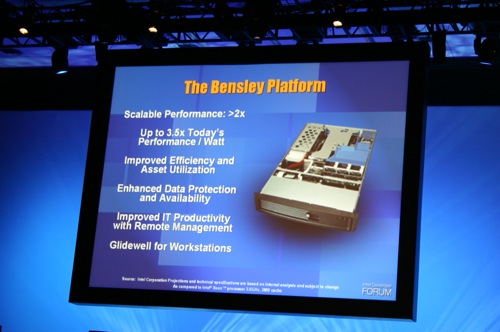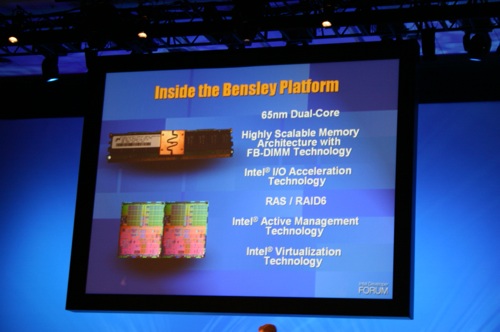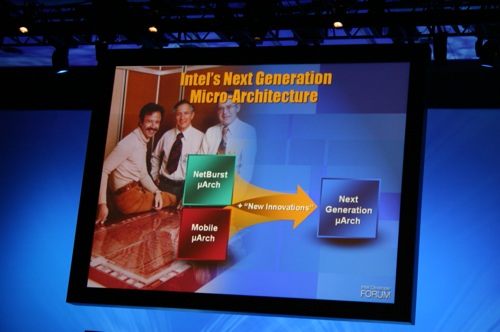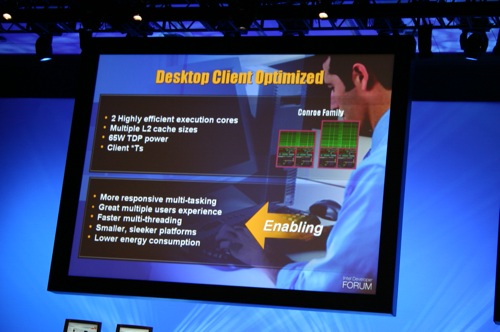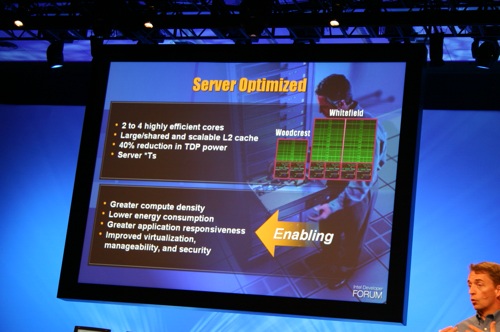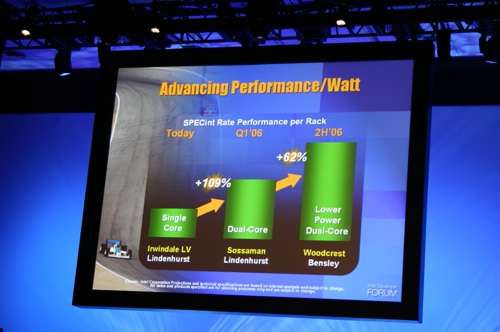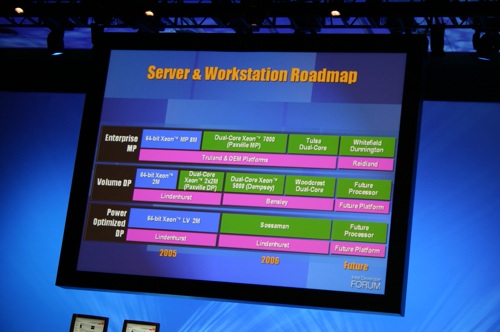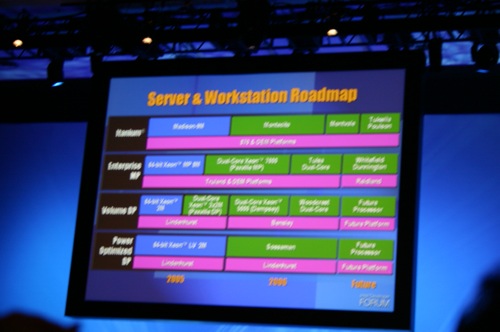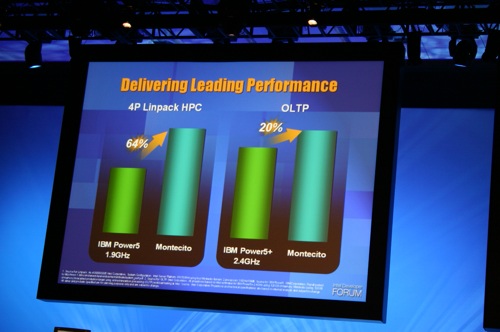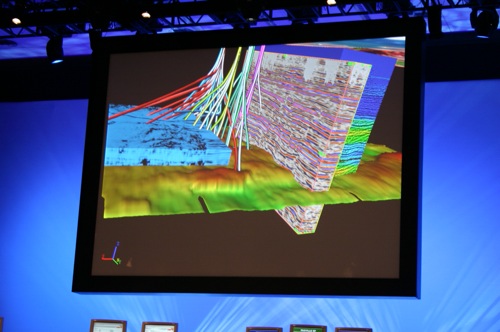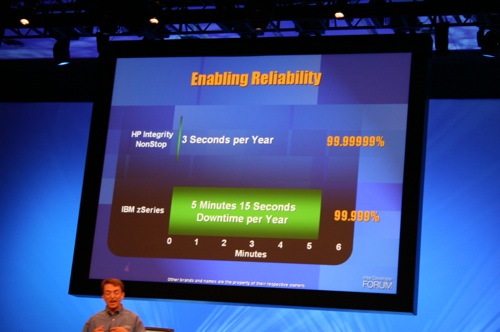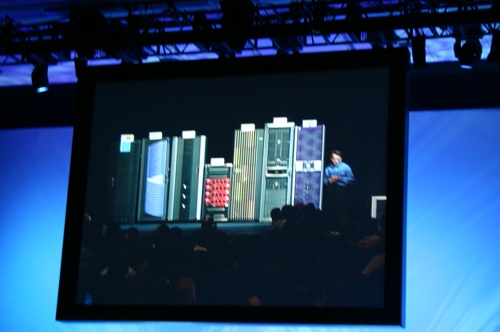
Original Link: https://www.anandtech.com/show/1767
Fall IDF 2005 - Day 2: Pat Gelsinger Reveals Intel's Server Plans
by Anand Lal Shimpi on August 24, 2005 1:39 PM EST- Posted in
- Trade Shows
Pat Gelsinger, in his new role at the helm of Intel's Digital Enterprise group, kicked off today's keynote with a recap on Intel's Active Management Technology (AMT) and its uses.
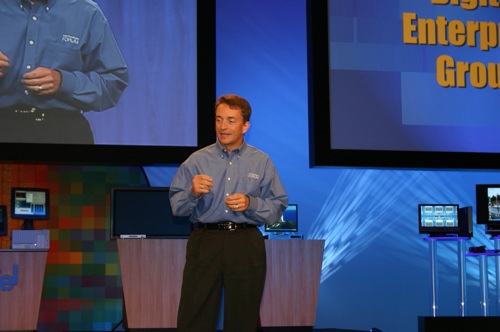
The most interesting AMT demonstration occurred earlier in the week and used AMT in combination with Intel's Virtualization Technology (VT) to provide a more secure Ethernet connection.
The idea is to virtualize the Ethernet connection, providing your primary OS with a virtual NIC driver that all Ethernet traffic goes over. The actual NIC resides within its own virtual OS that can be secured more effectively, thus making the overall platform more secure.
AMT wasn't the only thing recapped, we also saw a few Virtualization Technology demonstrations.
Pat made the world's first demo of Microsoft's Virtual Server 2005 Enterprise Edition with VT technology. The demo was running on a Xeon system with 3 virtual machines: a NT4 legacy OS, a SQL server partition, and a Web Server partition.
The next part of the demo was to migrate one of these virtual machines, the NT4 partition, to a separate physical system on the fly, without rebooting.
Literally the process was no different than making a few clicks, and in a matter of moments the entire virtual OS partition was sent to another Xeon server on the network. The implications of this sort of ease of movement on the enterprise environment is huge; now if you have one overloaded server with a number of OS partitions and you migrate to a two server network, instead of having to completely reinstall all software when the new server is brought into the network, simply power up the new server and move the virtual OS that will reside on it.
Pat also made the first demonstration of VMware ESX Server 2 with VT support.
This demo was to showcase isolation between the virtual OS partitions, where Pat made one OS crash and noted that crash's independence from the other two running OSes.
A blue screen
But the windows Server 2003 OS remained unaffected
As did the Linux partition
VT will be in Pentium 4 66x and 67x platforms by the end of this year, and early next year in the Pentium D.
Intel also mentioned that they will be migrating VT over time to including support for things like graphics.
VoIP: Intel Partners with Skype
Pat got to introduce all of the cool things today as he announced their new partnership with Skype to improve performance on the latest Intel processors.
One major goal of Intel's with VoIP, isn't to just improve performance, but also to improve overall audio quality. Pat looked at VoIP as an opportunity to improve the quality of telephone conversations by a huge magnitude over the old Public Switched Telephone Network (PSTN).
The reason for the improvement in quality is the move to a wider frequency band of audio thanks to VoIP rather than the very limited band that the PSTN operates over.
Multi-Core Everywhere
Although it hasn't been as big of a push at this IDF, Multi-Core truly is everywhere in Intel's roadmap.
Pat mentioned that both desktop performance and mobile performance segments will be see more than 70% penetration of dual core processors next year. Note that Intel isn't talking about overall market share, just the higher end performance segments.
And as mentioned earlier, Intel has 10+ quad core and beyond products under development. At next year's IDF Intel will disclose the ramp rates for quad core and beyond.
Looking at Server Platforms
Pat dove into a bit of platform discussion, looking at both current and future server platforms.
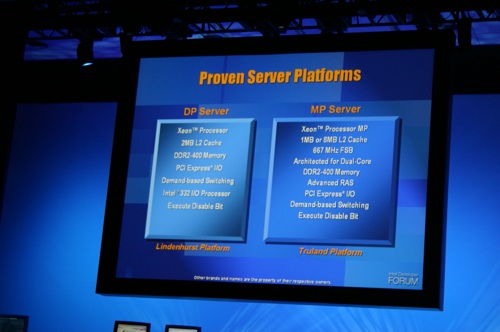
The first item of discussion were the soon-to-be-released Dual-Core Xeon processors running on Lindenhurst (DP) and Truland (MP) platforms.
The long-awaited Dual-Core Xeon parts will be shipping by the end of this year, and will both feature 2MB of L2 cache per core. The Dual-Core Xeon 7000 (MP) will feature a faster 800MHz FSB.
Pat ran a benchmark run-off between three server platforms: an Irwindale Xeon DP platform, with HT Enabled.
A Paxville Dual-Core Xeon DP platform, with HT enabled.
And a Paxville Dual-Core Xeon MP platform, with 4 CPUs and HT enabled.
The performance test of choice was Pov-ray, which the Paxville MP system completed in 26.14 seconds, compared to 41.22 seconds of the Paxville DP and the Irwindale DP platform did not complete by the time the slide was gone.
Tulsa: 1.3 billion transistors in a Xeon
Intel introduced the Tulsa processor, based on Intel's next-generation micro-architecture. The Tulsa processor is a dual core CPU, with a massive 16MB shared L3 cache totalling up 1.3 billion transistors on Intel's 65nm process.
Tulsa will work on the Bensley platform, which uses Intel's Blackford chipset.
The Blackford chipset features dual independent front-side buses offering 17GB/s of bandwidth to the two processors.
The Blackford chipset also features a 4-channel FB-DIMM memory controller, also offering 17GB/s of bandwidth to memory. The use of FB-DIMM technology has also allowed Intel to increase memory capacity on this chipset to 64GB.
The Bensley platform is already quite mature, with all of today's demos being run on Bensley with Dempsey CPUs. The most important point about Bensley is that it is compatible with both Dempsey and Woodcrest CPUs, meaning that a Bensley platform bought at the beginning of next year can accept the new Intel CPUs released at the end of next year without any hardware changes.
Next Generation Microarchitecture
Pat was kind enough to reveal some more details about Conroe and Woodcrest during his keynote.
There will be two Conroe (desktop) offerings, one with a shared 2MB L2 cache and one with a shared 4MB L2 cache.
Woodcrest, the next-generation server CPU, will feature a 4MB shared L2 cache. Its successor, Whitefield, will feature 4 cores and a 16MB shared L2 cache.
Pat also talked about the improvements in performance per watt, sharing with us the slide below that compared rack-level performance per watt:
Sossamn: Yonah in Servers
Being all about Enterprise, Pat talked about Sossaman - an Intel Xeon processor based on the 65nm Yonah core.
Sossaman will be made available at two separate power envelopes: 15W and 30W, both of which are extremely low for what will essentially be a high performance dual core server.
Intel will be making Sossaman available in 1U racks as well as other small form factor enterprise offerings.
A bit on Itanium
As his final topic, Pat Gelsinger made sure to continue to pump Itanium 2 as a platform with life and Intel's support.
Pat talked a bit about Montecito and its expected performance relative to IBM's Power5 processor:
He also demonstrated the uses of Itanium 2, such as oil excavation and how it can impact the search for underground fossil fuels. According to SGI and Halliburton, each hole they drill in the ground for oil excavation costs approximately $100M. With earlier systems their hit rate on correctly placing these expensive holes in the ground was a mere 20%, but with the most recent Itanium 2 SGI systems that hit rate has blossomed to 70%.
Pat was also proud to announce that HP's long running Itanium 2 server is now capable of 99.99999% uptime, averaging no more than 3 seconds of downtime per year.
The bit on Itanium 2 concluded with a shot of a handful of Itanium servers. While Pat tried his best to convince the crowd that Itanium wasn't dead, there was little talk about the future of the platform and how it is going to survive these next few years as Intel's x86 architecture improves.

